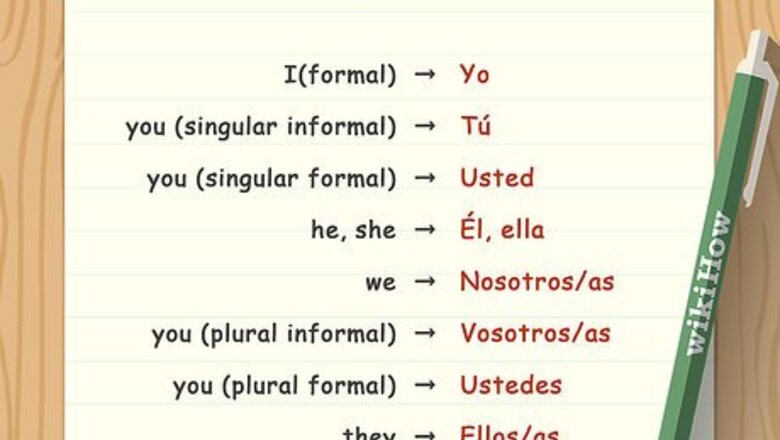
views
Conjugating Regular Verbs

Understand subjects. The subject is the noun that the verb is referring to. To conjugate a verb in Spanish, you'll first need to be familiar with the several different personal subject pronouns in the language. Here they are: Yo — I(formal) Tú — you (singular familiar) Usted — you (singular formal) Él, ella — he, she Nosotros/as — we Vosotros/as — you (plural familiar) Ustedes — you (plural formal) Ellos/as — they Note that while there are eight different subjects, there are only six different forms for conjugation. Él, ella, and usted are conjugated the same way, and so are ellos, ellas, and ustedes.
Determine the subject. Once you're familiar with subjects, you'll need to find the corresponding noun for the verb. If the verb is necesitar (to need), who is it that needs something? Is it you? The person you're talking to? A group of boys? The subject will determine the form of the conjugation.
Remove the ending. All Spanish verbs have the endings of either "-ar," "-ir," or "-er." Once you remove the current ending, you can add on the new corresponding ending. Unless the verb is reflexive; then it will have "se" tacked on past the end of the verb.
Conjugate "-ar" verbs. Once you learn the form of conjugation for "-ar" verbs in the present tense, you can just add the form to the end of any regular "-ar" verbs. Here are the rules for conjugating them in the present tense, using the verb hablar (to talk): Yo: o - hablo Tú: as - hablas Él, Ella, Usted: a - habla Nosotros/as: amos - hablamos Vosotros/as: áis - habláis Ellos/as, Ustedes: an - hablan
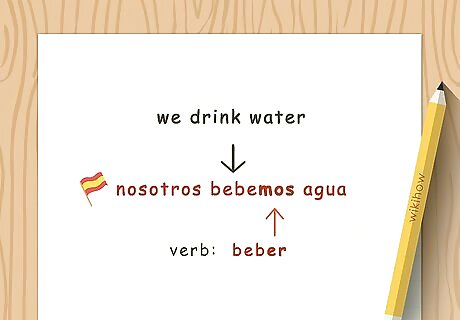
Conjugate "-er" verbs. Learn the form for conjugating "-er" verbs in the present tense and just add it to the end of each verb. Here are the endings for the verb "-er" in the present tense using the verb beber (to drink) as an example: Yo: o - bebo Tú: es - bebes Él, Ella, Usted: e - bebe Nosotros/as: emos - bebemos Vosotros/as: éis - bebéis Ellos/as, Ustedes: en - beben
Conjugate "-ir" verbs. Learn the form for conjugating "-ir" verbs in the present tense and just add it to the end of each verb. Here are the endings for the verb "-ir" in the present tense, using the verb vivir (to live): Yo: o - vivo Tú: es - vives Él, Ella, Usted: e - vive Nosotros/as: imos - vivimos Vosotros/as: ís - vivís Ellos/as, Ustedes: en - viven
Conjugating Reflexive Verbs

Learn the conjugate the pronoun "se". To conjugate a reflexive verb, the first thing you'll have to do is to learn how to conjugate it depending on the subject pronoun. Each subject pronoun has a distinct form of se. These conjugated forms of se will work in any tense. Here they are: Yo: me Tú: te Él, Ella, Usted: se Nosotros/as: nos Vosotros/as: os Ellos/as, Ustedes: se
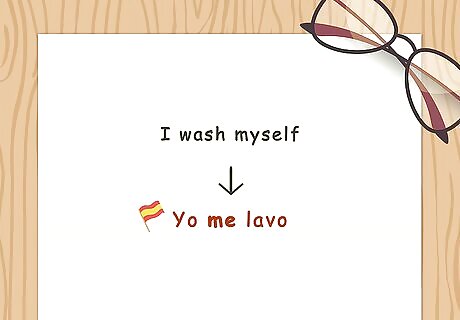
Place the form of "se" in front of the verb. Before you proceed, you can place the appropriate form of "se" before the verb. You can think of this as removing the "se" at the end of the verb before you conjugate it. Remove the "se" ending from the end -- you've already conjugated it.
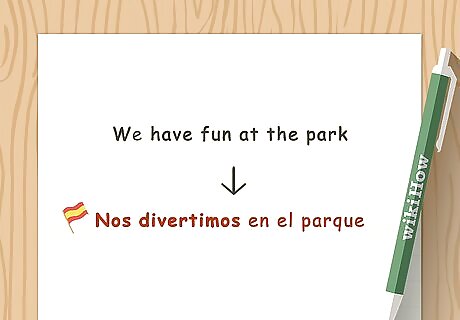
Conjugate the verb. Now just conjugate the verb according to the rules of conjugating a verb in the present tense -- provided that it's a regular verb. Place the verb after the correct form of se and you'll be done conjugating. You can eliminate the subject pronoun before the reflexive pronoun when you make a statement using a reflexive verb; for example, you can say "Yo me lavo" to say "I wash myself," but the statement "Me lavo" is more common. Here are the forms of the conjugated reflexive verb levanto (to get up) in the present tense: Yo: me levanto Tú: te levantas Él, Ella, Usted: se levanta Nosotros/as: nos levantamos Vosotros/as: os levantáis Ellos/as, Ustedes: se levantan
Conjugating Irregular Verbs
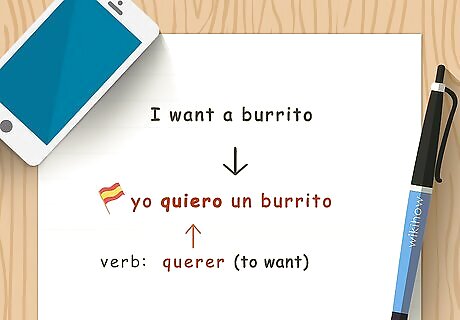
Conjugate stem-changing verbs. These verbs are also referred to as “radical changing verbs”, which means “stem” or “root” in Spanish. In stem-changing verbs, the stem vowel of the verb changes in the present tense. However, the stem does not change in the nosotros or vosotros forms of the verb. There are a few different ways that the stem vowel can change. Here are some examples: Conjugate verbs with a stem change from o to ue using dormir (to sleep) as an example: Yo: duermo Tú: duermes Él, Ella, Usted: duerme Nosotros/as: dormimos Vosotros/as: dormís Ellos/as, Ustedes: duermen Conjugate verbs with a stem change from e to ie using querer (to want) as an example: Yo: quiero Tú: quieres Él, Ella, Usted: quiere Nosotros/as: queremos Vosotros/as: queréis Ellos/as, Ustedes: quieren Conjugate verbs with a stem change from e to i using seguir (to follow or continue) as an example: Yo: sigo Tú: sigues Él, Ella, Usted: sigue Nosotros/as: seguimos Vosotros/as: seguís Ellos/as, Ustedes: siguen
Conjugate verbs that change in the first person. Some verbs are irregular in their first-person present tense form. The rest of the forms of the verbs will follow the conventions of conjugating regular verbs. It's best to memorize these verbs to conjugate them correctly. Here are a few example of verbs that are only irregular in the first person (the yo form): Conjugate verbs that change from c to zc in the first person: Conocer (to be acquainted with): Yo conozco Agradecer (to thank): Yo agradezco Ofrecer (to be acquainted with): Yo ofrezco Conjugate verbs that have a g appear in the first person: Caer (to fall): Yo caigo Salir (to go out): Yo salgo Tener (to have): Yo tengo Traer (to bring): "Yo traigo" Conjugate verbs with others changes in the yo form: Dar (to give): Yo doy Saber (to know): Yo sé Ver (to see): Yo veo
Conjugate other irregular verbs in the present tense. There are other commonly used verbs -- and some not so commonly used -- that are not stem-changing verbs but which are just conjugated in an irregular way. Memorizing these words will help you speak basic Spanish. Here are some of the most common irregular verbs conjugated in the present tense: Estar (to be): Yo: estoy Tú: estás Él, Ella, Usted: está Nosotros/as: estamos Vosotros/as: estáis Ellos/as, Ustedes: están Ser (to be): Yo: soy Tú: eres Él, Ella, Usted: es Nosotros/as: somos Vosotros/as: sois Ellos, Ellas, Ustedes: son Ir (to go): Yo: voy Tú: vas Él, Ella, Usted: va Nosotros/as: vamos Vosotros/as: vais Ellos/as, Ustedes: van




















Comments
0 comment